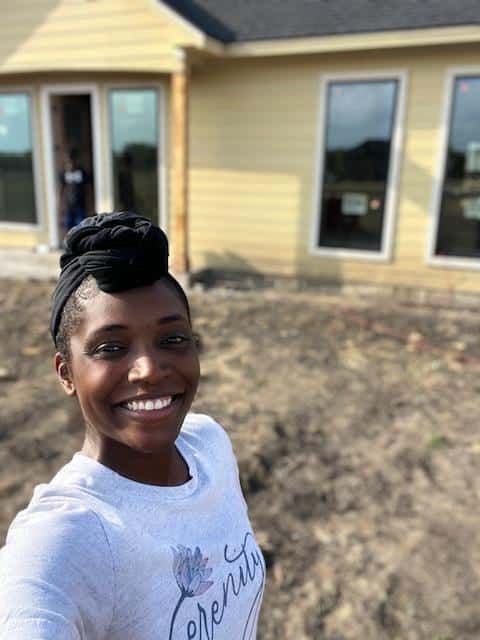For Ashley Greene, her dream of opening a community birth center flows from her own experience with hospital birth, where she was coaxed into fear-based decisions that caused her physical and emotional harm. “It was very traumatic,” says Ashley, who became a midwife to ensure that other Black women would have the safe, supportive options she did not. Today, Ashley is the director of Serenity Midwifery and Birth Center in Forreston, Texas, a small community about 40 minutes south of downtown Dallas, where she is poised to open the county’s first Black-owned birth center in Spring of 2023.
Ashley was moving toward opening a birth center for years, but faced big setbacks during COVID. Then, a year ago, Ashley received a $50k Open Doors Initiative grant from Birth Center Equity. “That’s when I said, ‘I gotta do this’,” recalls Ashely. “I thought, ‘BCE believes in me. My clients believe in me. My community believes in me.’”
With the Open Doors grant, plus a bank loan and direct fundraising, Ashley began working with a builder on plans to construct a birth center on a half acre of land next to the larger “homestead” that her family purchased in rural Ellis county. “I want women to have a space that is serene and quiet, with no sirens and cars. I want women in labor to be able to walk out under the stars.” While Ashley initially wondered if her mostly urban clients would make the trek out to the country, she’s found no drop in demand for the office visits she currently provides in her home birth practice on the homestead. “They still find me!”, she says. “And my clientele is still 98 percent Black.”
Despite having the land and significant funding in place, Ashley has faced a barrage of logistical barriers – driven by popular misconceptions about birth – from local government officials. “I did all my research about county regulations, and met with the fire marshal and others to make sure our plans would fly.” Nonetheless, as construction moved forward, the county came back in and put the project on pause.
“Even though we talked about all of this on the front end, the county officials really had no conception of what a birth center was,” says Ashley. “They saw us as an ambulatory care center, which is the closest thing they could imagine to a birth center.” With that picture in their heads, the county sought to impose construction regulations as if the space would be a highly medicalized “mini-surgery” center.
Ashley ultimately won the battles, enduring extensive additional review processes where she needed to submit and re-submit detailed plans. She is overjoyed that construction has once again resumed, and says she learned a lot on the way.
“We’re really fighting a battle of perception,” says Ashley. “I sort of neglected that, thinking ‘Oh, everybody knows what midwifery is, what a birth center is. I don’t need to explain that!’ But, clearly I did. Their idea of birth was like something in Jurassic Park.”
“We’re fighting a perception of birth as a really bloody messy highly-medicalized process, with lots of equipment and lots of people,” says Ashley. “They thought a birthing person wasn’t even able to move around,” she recalls. “I was like, ‘I don’t know what you all have seen, but that’s not what birth is. It’s about letting bodies do what they know how to do.’”
Asked what advice she’d give to other Black women hoping to open a birth center, Ashley puts direct interpersonal communication at the top of her list. “Start by building relationships with local governing bodies, like the fire marshal and other health and safety regulators,” she counsels. “Help them understand what a birth center is, and ask them to help you understand what regulations they require.”
Ashley is clear that growing a network of community birth centers will require building cultural, political, and economic power. “We need to work together in a national strategy,” she says. “We need to be visible at every level of governance, not just in the birth world. This is a huge part of the work that needs to be done.”
Photo: Ashely Greene




